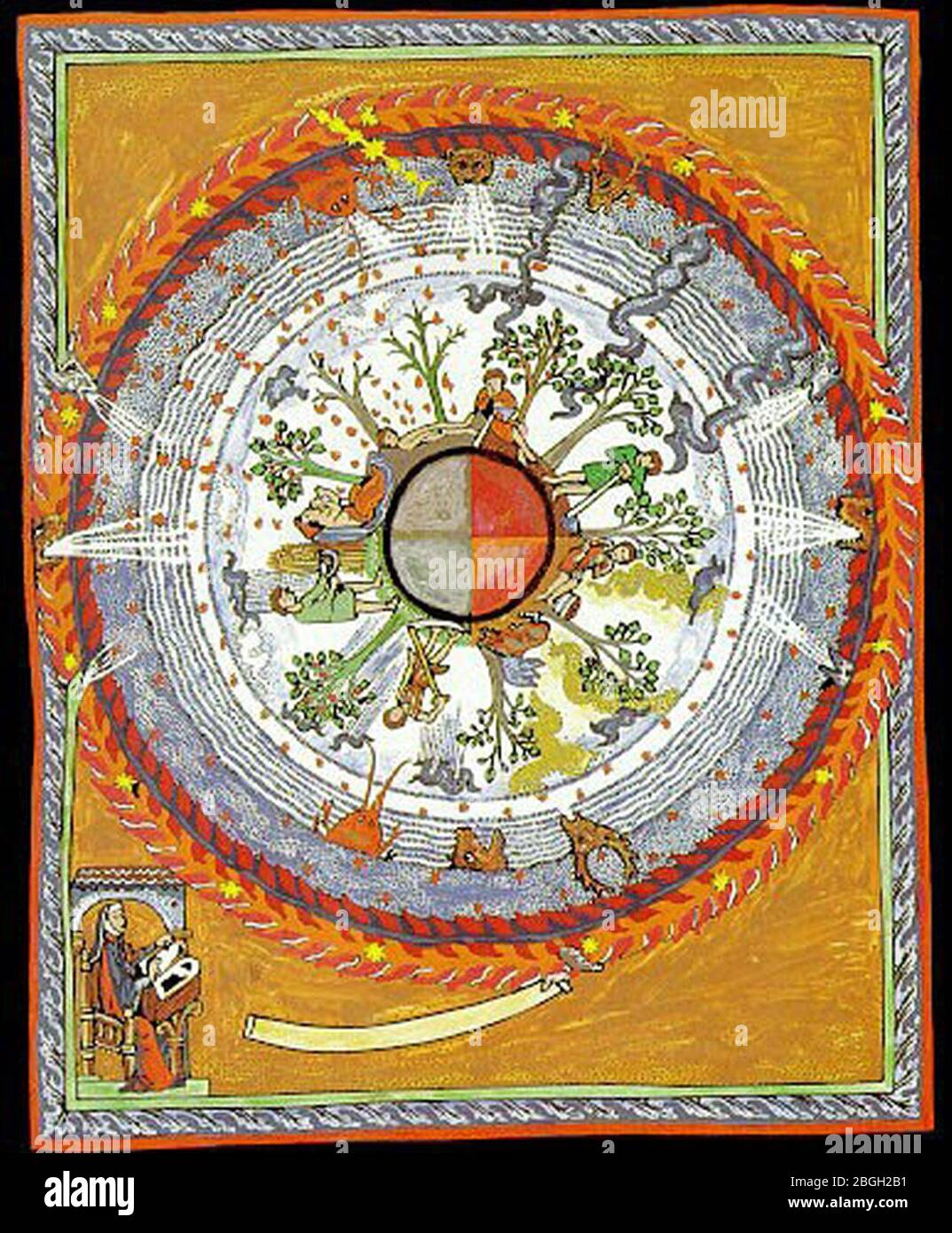


Therefore, being the tenth of ten children and the victim of frequent illness in the form of migraine headaches (later understood as the root of her many godly visions), Hildegard was sent to live in the convent at Disibodenberg at the age of eight. However, her family was not as well off as what could have been expected of a noble family at the time. She was, as many future abbesses were, born into a noble family. She was active as an abbess of the Benedictine order during the height of the 12th century. Her work continued to inspire both men and women of the faith long after her death and, in 1324, Hildegard finally reached the status of sainthood.Hildegard of Bingen was born in the year 1098 and died in the year 1179. Moreover, she was well-known for her musical compositions and examinations of the natural world, as exemplified in her scientific and medicinal writings. In addition to Scivias, Hildegard published two other works which described her visionary theology, Liber Vitae Meritorum and Liber Divinorum Operum. Such a work coming from a female writer was unheard of, especially in the twelfth century and despite being uneducated, Hildegard chose to write Scivias entirely in Latin, thus positioning herself among the male literary and theological elite. Although the illustrator and time of illustration is highly debated, the images provide extraordinary insight toward Hildegard’s attitudes of a feminine divine. Created in the monastery of Rupertsburg, it is considered one of the most lavish and decorated medieval manuscripts. Years later, Hildegard’s writings were transformed into an exquisitely illuminated manuscript, with thirty-five illuminations inspired by her visions. Combined, each of the three sections detail twenty-six visions that provided instruction and direction with regards to religious doctrine. The manuscript is divided into a trinitarian or tripartite pattern in which Hildegard reflects on the works of God and His relation to humanity the figure of Christ and the process of redemption and Holy Spirit with particular emphasis on the virtues and the path to salvation. Written over the course of ten years, Scivias (a contraction of the Latin Sci Vias Domini, or “Know the Ways of the Lord”) was finally completed some time around 1151. Thus, at the age of forty-two, Hildegard began writing down her visions with impeccable detail. In the preface of her first book, Scivias, Hildegard describes her decision to introduce the world to her relationship with God,īut although I heard and saw these things, because of doubt and low opinion (of myself) and because of the diverse sayings of men, I refused for a long time the call to write, not out of stubbornness but out of humility, until weighed down by the scourge of God, I fell onto a bed of sickness. She attributed her illness as a punishment from God for refusing to openly discuss her visions. Shortly after, she became so ill that she was forced into years of bed rest. Coming from noble descent and having the means of wealth, Hildegard was sent off around the age of seven or eight to a monastery in Disibodenberg, where she would continue to experience visions throughout her adolescent and adult life.ĭue to embarrassment, Hildegard ceased talking about her supernatural experiences and took a vow of silence at the age of thirty-eight. From then, her enthusiasm and eccentricity, combined with constant illness, attracted the attention of her family, particularly her parents. Hildegard claims that she had her first visionary experience when she was only five years old. Hildegard was born in the Rhineland valley of western Germany and from an early age exhibited signs of being an extraordinary child. The manuscript – to be considered as a guide – takes into consideration the concepts of Universe, respectively representing macrocosm and microcosm, and deals with the process of salvation which can only be attained through redemption. The Liber Scivias is the first theological-cosmological work by Hildegard of Bingen (1098-1179), a German Benedictine abbess, writer, composer, philosopher, Christian mystic, visionary, polymath. The earth of humankind contains all moistness, all verdancy, all germinating power. She is the mother of all, for contained in her are the seeds of all. She is the mother of all that is natural, mother of all that is human


 0 kommentar(er)
0 kommentar(er)
